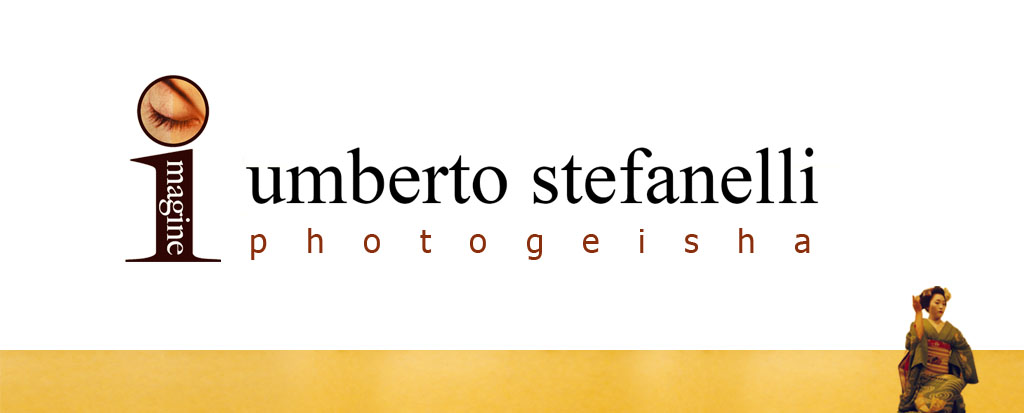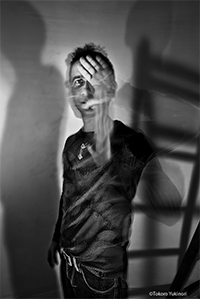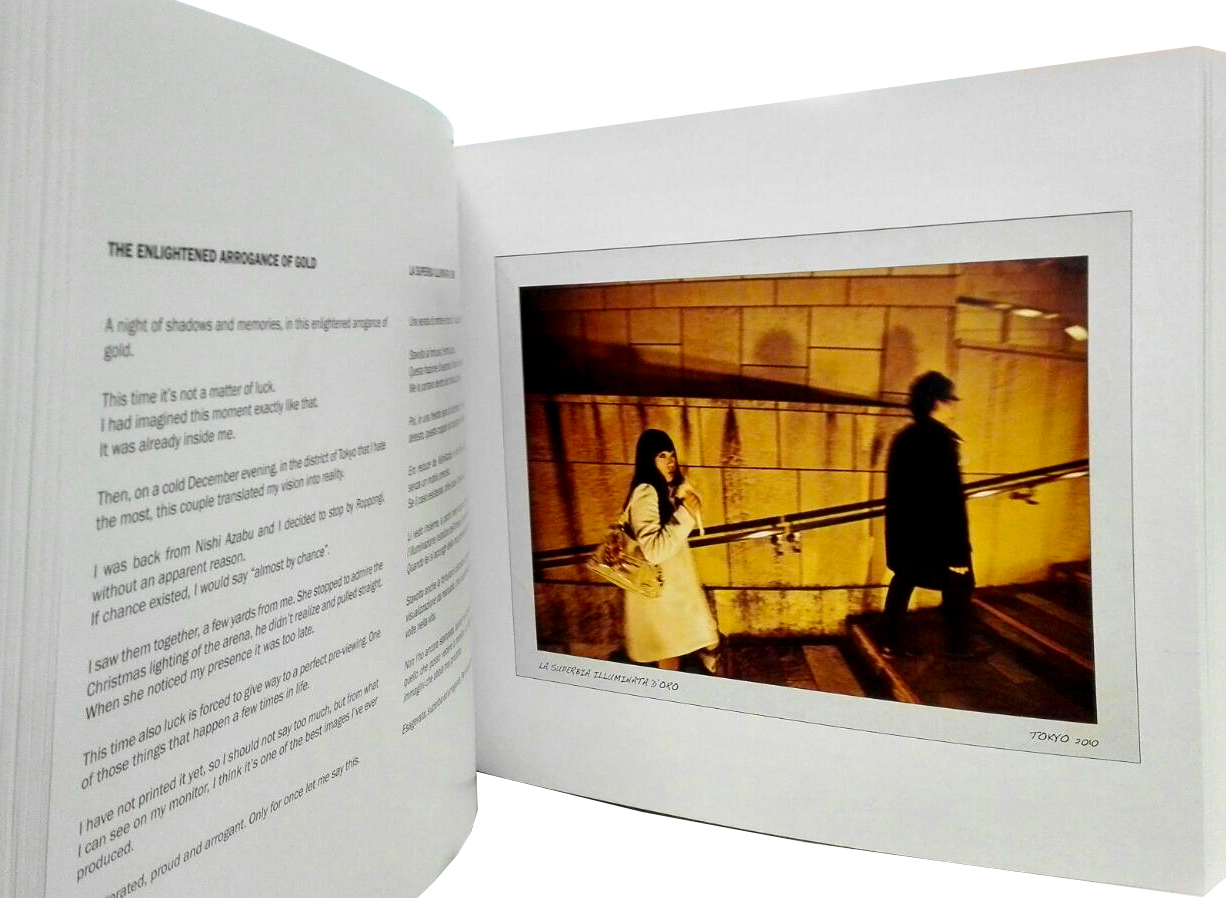“Stimoli innominati, sofferenze senza cure e passioni senza risposte” – “Unnamed élan, reliefless suffering and passion without answer”
L’impatto visivo delle gigantografie che accolgono i visitatori all’ingresso del Duolun Museum of Modern Art di Shanghai possiamo solo immaginarlo, sulla scorta dell’emozione che abbiamo provato quando abbiamo visto delle DigiGraphie più piccole sulle nostre scrivanie.
I rami degli alberi che ci separano dal cielo, il biancore, i mille piccoli petali sfumati, la mancanza di dettaglio, “poco colore e tanto movimento”: tutto racconta di un luogo reale raccontato in modo personale e capace di coinvolgere.
“La capacità di emozionare e di emozionarsi. Un argomento complicato, che presenta molteplici sfaccettature. Un profumo, una melodia, un’immagine, un gesto, un gioco di memoria, una manciata di parole. E’ un attimo l’emozione. Più è breve, più è intensa.”
In queste parole c’è il desiderio umano che ciò che si fa, il risultato del nostro impegno con la realtà, qualunque esso sia, abbia un senso, un motivo.
La capacità di emozionare richiede la capacità di emozionarsi: ed è con questo presupposto che noi possiamo accogliere queste immagini che nascono da una percezione personale che si traduce istantaneamente, grazie alla capacità sintetica del loro autore, in un’emozione per tutti.
In queste pagine c’è un altro elemento che descrive la personalità di Umberto: ed è la strada, il percorso fisico e interiore del viaggio. La strada aperta all’infinito, la forma degli elementi naturali così misteriosamente intelligibile, il desiderio di conoscere, l’apertura verso l’imprevisto e il disvelamento del quotidiano che perde la sua apparente consuetudine per diventare uno stimolo a non dare nulla per scontato.
Le Polaroid sono davvero una tappa significativa del suo percorso: suggestive ed emblematiche di una capacità di riflessione e di una domanda a 360 gradi sul senso della vita, accompagnate da quelle frasi scritte di getto con calligrafia che non cerca apprezzamenti.
Questo non significa improvvisazione, istintiva reazione a ciò che si vede e che si registra su supporto fotografico: la cifra stilista di un autore sincero si riconosce dalla sua perseveranza nel confrontarsi con i temi che l’intuizione creativa suggerisce e con l’impegno tenace, concreto, a perseguirli, sperimentarli, comunicarli.
E Umberto Stefanelli non si è mai sottratto a questo impegno, sopratutto “materiale”: una dedizione concreta alla fotografia fine-art, quella che si può realmente apprezzare quando la si vede concretamente, nella sua materialità fisica.
Ricordiamo solo due serie importanti del suo percorso artistico. Quella che pubblicammo nel 2002, in occasione di una sua mostra a Tokyo: “30 maggio ’69. Hand made universe: between paper’s body and true, sensitive skins: a new view on fashion by Umberto Stefanelli”, che presentava 70 pezzi fra moda e manga giapponesi rielaborati con tecniche miste. Ogni opera rappresentava un pezzo unico, a cominciare dalla carta dipinta, dorata, marmorizzata o trattata in altro modo, dall’artista stesso, prima di ricevere la fotografia. E poi “Io sto alla porta… e busso”, un progetto nato in occasione della morte di Papa Giovanni Paolo II: da vedere.
C’è un’ultima cosa che ci sentiamo di scrivere: è l’amore che Umberto ha per la cultura orientale, quasi un “mal d’Oriente” , se si vuole citare il più conosciuto “mal d’Africa”. Per un uomo e fotografo che ha rischiato la carriera prima a Londra, poi a New York, è una dichiarazione d’amore singolare ma comprensibile, un amore “per una terra e per un popolo, che non conoscono nient’altro che la perfezione” e che cercano di preservare questo tesoro in ogni modo.
Sara (Namias) and Elisabetta (Piatti)
Zoom magazine www.zoom-net.com
I virgolettati riprendono alcune frasi del blog di Umberto Stefanelli photogheisa.com
ENGLISH
We can only imagine, on the basis of the emotion we felt when we saw the smaller Digigraphie on our desks, the visual impact of the blow-ups that greet visitors at the Duolun Museum of Modern Art in Shanghai.
The branches of the trees that separate us from the sky, the whiteness, thousands of small feathered petals, lack of detail, “not very much color and a lot of movement”: everything says much about a real place, narrated in a personal and captivating way.
“The ability to excite and thrill. A complicated topic that has many facets. A fragrance, a melody, a picture, a gesture, a memory game, a handful of words. Emotion is a moment. The shorter, the more intense it becomes”.
In these words is the human desire that what we do, the result of our commitment to reality, whatever it is, has a meaning, a reason.
The ability to excite requires the ability to get excited and it is with this assumption that we understand that these images come from a personal perception, which translates instantly in an emotion for everyone, thanks to the synthetic capacity of the author.
In these pages there is another element that describes the personality of Umberto: the road, the path of a physical and spiritual journey. The open road to infinity, the shape of the natural elements so mysteriously intelligible, the desire to learn, the openness to the unexpected and the unveiling of the ordinary that loses its apparent practice to become an incentive not to take anything for granted.
The Polaroid has a very important part in his career: evocative and emblematic of a capacity for reflection and a 360 degree insight on the meaning of life, accompanied by those handwritten words that do not seek praise.
This is by no means improvisation but instinctive reaction to what is seen simply recorded in a photographic image: the sum of an author’s true creativity is recognizable by his perseverance in dealing with the issues that creative intuition evokes followed by the untiring commitment to pursue them, experiment and convey them.
Umberto Stefanelli has never stepped away from this “material” commitment: his, is a real dedication to fine-art photography and you can really appreciate it when you see it in practice, in its physical materiality.
We would like to mention here just two major series of his artistic career. The first is what we published in 2002, during an exhibition in Tokyo: “May 30 ’69. Hand made universe: Between paper’s body and true, sensitive skins: a new view on fashion by Umberto Stefanelli”. This project presented 70 pieces of fashion Japanese manga revised with mixed techniques. Each piece of work is unique, starting with the paper that could be painted, gilded, marbled or treated in any another way by the artist himself, before we get the picture. The other series is “…I stand at the door and knock”. A project born following the death of Pope John Paul II: a must see.
There is one last thing that we would like to say: Umberto’s love for the Far East culture is almost a “Mal d’Asia”, to cite and compare to the well known “Mal d’Afrique”. For a man and photographer who has risked his career first in London, then in New York, is a strange declaration of love but understandable. A love for “a land and a people who strive for nothing but perfection “and who seek to preserve this treasure in every way.
Sara Namias and Elisabetta Piatti
Zoom magazine www.zoom-net.com
Phrases in inverted commas are taken from Umberto Stefanelli’s blog: www.photogeisha.org












Articolo stupendo. Zoom è sempre Zoom.
What a beautiful article!
mal d’oriente!
Non si può dire: “Buona pesca!'”ad un pescatore,senza il rischio di
un ‘imprecazione da parte di questi.
Non mi sembri un pescatore di tonni giapponesi,né un portatore sano di “…dù braccia bbone …” pronte per la terza secca.
Come per tutti gli artisti,da Dedè in poi,l’unico urlo che si potrà udire,a porte chiuse e a sipario ancora calato,sarà solo…
MERDA MERDA MERDA.
Ad maiora.
Madda avvisa per favore!!! Sono sdraiato in terra dalle risate.
Dal pescatore Jap alle “du’ braccia bbone”…a trovalle…per non parlare del capolavoro “come per tutti gli artisti da Dedè in poi”.
Quando ti ci metti ancora dici la tua eh!
Dietro ogni grande uomo… c’e’ sempre una grande donna!!!